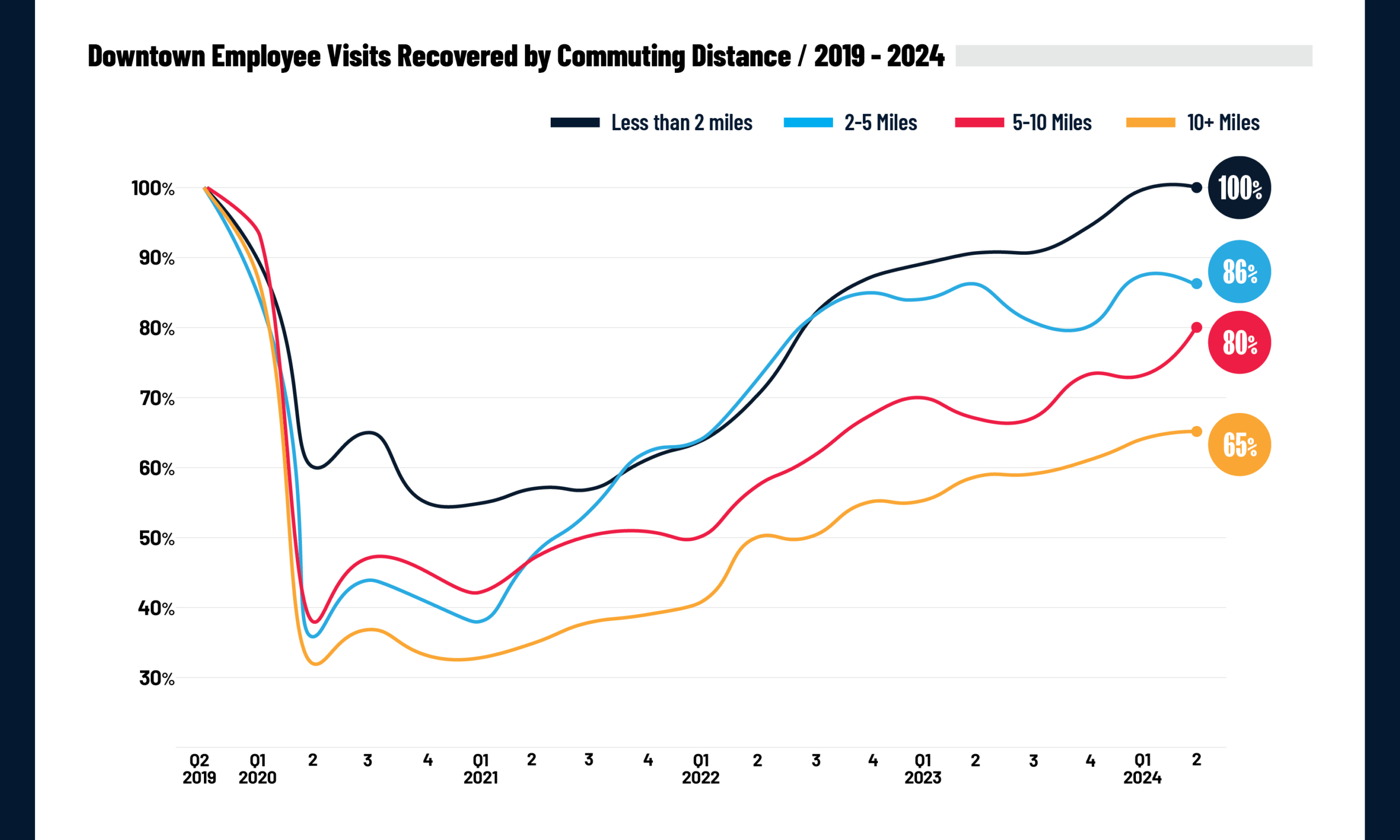Employees living close to their Downtown office are back at 100% of 2019 levels
By Tommy Wilson, Director of Business Recruitment & Research at Downtown Council of Kansas City
For the last two years, the Downtown Council, similar to many of our peer organizations, has analyzed anonymous location data generated by Placer.ai to measure the impact of the pandemic on our Downtown and the degree of recovery achieved to date.
Placer.ai is a provider of place-specific estimates of the volume of people based on the location of their mobile phones at different times of the day. Placer sorts this data into three types of downtown users; residents of an area (where the phone is located through the night with specific locations anonymized), employees within the selected geography (where the phone routinely goes during the workday), as well as the number of local and out of market visitors.
This report utilizes Placer’s data to tabulate and compare the current number of employee visits to Downtown to those prior to the pandemic.
Correlation Between Length of Commute & Return to the Office
As of July 2024, the volume of Downtown employees coming into the office stands at 76% of 2019 totals, ranking Kansas City fourth among the largest cities in the country. This represents a 4% increase in the number of employee visits Downtown from 2023 and a 43% increase since 2022.
In addition, Placer data documents that proximity to work is closely tied to returning to the office. In Downtown Kansas City, the volume of workers returning to the office is at 100% of 2019 levels for those living less than two miles away from their place of employment. The likelihood of workers returning to the office decreases the farther employees live from Downtown, with those living 10 or more miles away returning at an approximate rate of 65%.
This means a strong investment in Downtown housing is also a business attraction and employment growth strategy. As we grow our residential population, the stronger likelihood we will continue to see a very high rate of employees returning to the office which makes Downtown an appealing choice for companies looking to locate here. With an increase in the number of companies, workers, and residents, the more support we gain for our ancillary businesses and retailers.
Telling the story of Downtown’s densely packed talent cluster returning to the office as well as ease of access for an even broader regional talent pool is one ingredient for attracting new employers to Downtown to drive job growth.
Downtown Office Market
Many employers are already recognizing this appeal and recent leasing transactions show continued investment in Downtown’s office market. Tria Health just relocated from Overland Park into their new office at Grand Place in the Crossroads, Sporting Kansas City renewed their commitment to Downtown by moving north into Somera Road’s 3Y building in the River Market, and HNTB recently announced they will expand to 160,000 square feet when they move into their new office inside 1111 Main, formerly known as the Town Pavilion.
Since 2022, more than 30 businesses have located or renewed their commitment to Downtown – collectively totaling more than 1.3 million square feet of leased office space. This activity has increased the number of Downtown employees to more than 122,000, which represents 10.5% of the region’s labor force.
Downtown Kansas City
Today, after the challenges of the last several years, Downtown Kansas City endures as the region’s largest employment center blended with the fastest-growing residential neighborhood in the metropolitan area. Downtown benefits from a substantial volume of housing intermixed with office, healthcare, and education; a strong convention and tourism business; a vibrant arts scene; as well as award-winning restaurants activating our ground floor spaces.
Together, these elements provide an appealing environment for employees and businesses seeking a thriving location full of amenities within a dense, walkable neighborhood. The interactivity of Downtown’s diverse uses has accounted to a large degree for its successful transformation but enhancing and adding to these uses will be the key to reaching our full potential.




